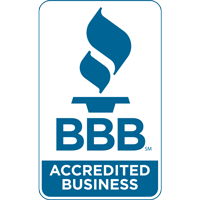
Ceiling fans are one of the most overlooked ways to make your home more comfortable and reduce energy costs. By improving air circulation and assisting your HVAC system, ceiling fans and energy efficiency are truly a natural pairing. They offer a smart, eco-friendly way to keep cool while reducing strain on your AC—potentially sparing you from unnecessary air conditioning repair.
In this blog, the experts at Phelps Heating & Cooling, Inc. break down how ceiling fans can make your home feel more comfortable while avoiding energy waste with increased HVAC efficiency. We'll also provide some HVAC efficiency tips that take advantage of ceiling fans.
Comfort vs. Temperature: The Effect of the Wind-Chill Effect Indoors
Ceiling fans don’t actually change the room’s temperature—they make your home more comfortable by blowing air across your skin. This is referred to as the wind-chill effect, and it can make a room feel up to 4 degrees cooler without lowering the thermostat. That means you feel less hot and enjoy the benefits of indoor air circulation from your ceiling fan while minimizing air conditioner use—helping reduce your electric bill in summer.
The Best of Both: Advantages of Pairing Fans and Air Conditioning Together
There are several advantages to using ceiling fans and air conditioning at the same time, especially on hotter days. By pairing both, you maximize HVAC efficiency and enjoy a cooler living space with less effort from your cooling system.
Benefits of using ceiling fans and AC together:
- Ceiling fans help lower HVAC load by moving cool air more evenly around rooms in your home. Limiting HVAC stress is important, because it can help you avoid a breakdown that may result in premature AC or furnace installation.
- Using overhead fans boosts the comfort level of your home by reducing uneven temperatures and enhancing circulation.
- Pairing ceiling fans and AC can cut energy consumption. If you have a home automation system, you can even modify your smart thermostat settings to bump up the temp a few degrees while your ceiling fan is running.
Clockwise vs. Counterclockwise Ceiling Fan Rotation: What Direction to Spin in Summer and Winter?
To get the most out of your ceiling fans year-round, it’s important to make sure the blades rotate in the proper direction for the season. The direction affects how air flows, which can either cool you down or redistribute heat so you feel warmer.
When to spin ceiling fans counterclockwise
In the summer, ceiling fans should spin counterclockwise at a faster setting. This creates a breeze that forces cool air down, increasing the wind-chill effect and causing you to feel cooler.
When to spin ceiling fans clockwise
In the winter, set your fan to turn clockwise on a gentle setting. This lifts cooler air and pushes warm air near the ceiling down toward you, making the space feel cozier without touching your thermostat.
What Type of Ceiling Fan Is Best
Choosing the ideal ceiling fan depends on a few critical considerations, such as blade design, airflow rating and room dimensions. First, look for fans that offer a good balance of ECFM airflow and blade pitch to ensure efficient air movement in your home:
- ECFM refers to the amount of air a fan circulates—the cubic feet per minute, or CFM—per watt of electricity it uses. Fans with greater ECFM are more energy efficient.
- Blade pitch refers to the incline of the blades. A sharper blade pitch increases airflow but can also put extra load on the motor.
Also, consider room size when sizing a ceiling fan—a fan that’s too small won’t move enough air, while one that’s too big may be too strong for the space.
Raise Your HVAC Efficiency With the Team from Phelps Heating & Cooling, Inc.
At Phelps Heating & Cooling, Inc., our HVAC technicians can help you maintain a cozy home while minimizing wear on your heating and cooling systems. From practical fan advice and air conditioning installation to smart thermostats and furnace repair, we offer comprehensive services that match your needs. Reserve your appointment by calling 270-358-3167 today.



